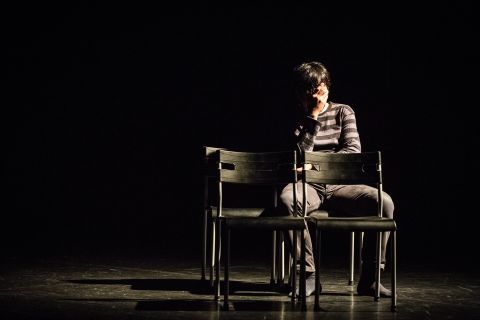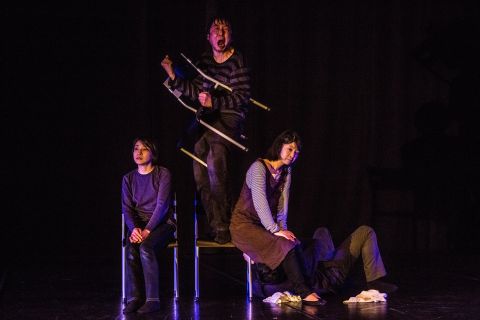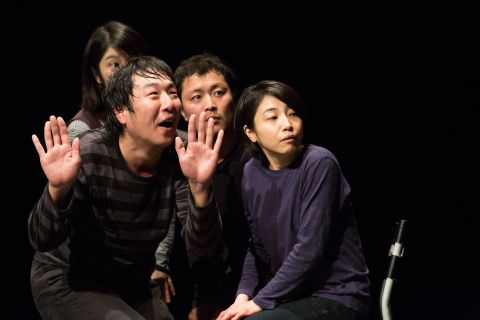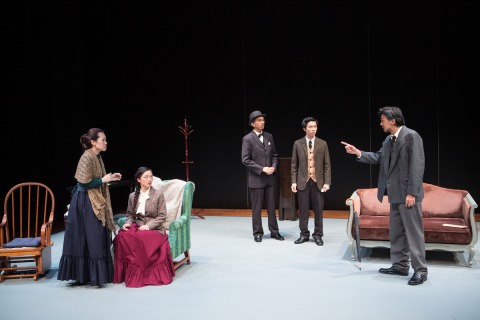[Review] Suteru Tabi - M1 Singapore Fringe Festival
 Saturday, January 11, 2014 at 3:09PM
Saturday, January 11, 2014 at 3:09PM
 Suteru Tabi Photo credit: Shawn Bryon Danker
Suteru Tabi Photo credit: Shawn Bryon Danker
Four chairs on the stage and three towels set the stage. When the show begins, we see a man sitting in one of the chairs. There is a long pause and eventually he starts sobbing uncontrollably until he moves the chairs away. There is an air of fear in the audience as there is a threat of the actor possibly throwing the chair on stage.
Later on, it appears as if he is in between the state of anger and playfulness. I’m not sure whether he is a child trapped in an adult’s body or whether he suffers from a medical condition. Gradually, I discover that he is a child and this begins the journey of the play.
The magic of Suteru Tabi is in the complexity that is hidden in the simplicity. There is a reference to myth and continuous non-linear storytelling. We are in a half real, half memory, half dream state and an all-in-all elaborate world created by director Shiro Maeda.
 Suteru Tabi Photo credit: Shawn Bryon Danker
Suteru Tabi Photo credit: Shawn Bryon Danker
In the post-show discussion, we discover how director Shiro Maeda purposely wrote this play with this format to tell a story in this manner. There is so much attention to detail and knowing that the play has been performed numerous times over the course of five years is interesting. I also discover that it was a piece meant for the domestic Japanese market yet has managed to connect with audiences around the world.
The theme of loss is perhaps the key. In the play, the main character revisits himself losing his dog and his unborn son to face his father’s death. The floating fleeting sensation evoked by this play is half hallucinatory and the illogical is soon accepted as the norm. In moments such as a scene at the hot springs, we are led to believe the characters are undressed even though they are fully clothed on stage. The strong acting transcends what is obvious and takes you into this universe.
By the end of the show, there is a reconnection with the opening scene with the burial of the father. We’ve been taken on an emotional journey and because of the narrative (or lack of a conventional linear narrative), it is as if we have woken up from a dream.
 Suteru Tabi Photo credit: Shawn Bryon Danker
Suteru Tabi Photo credit: Shawn Bryon Danker
During the post-show discussion, the director explains more of the piece and how it has developed over the years. As with a piece like this, the cast has seen it change over the years. With a piece like this, it is worth revisiting as an audience member as well.
I hope I will.
- Az Samad, 10 January 2014
_________
❤ If you liked this post, please Like it or Tweet it! =)



